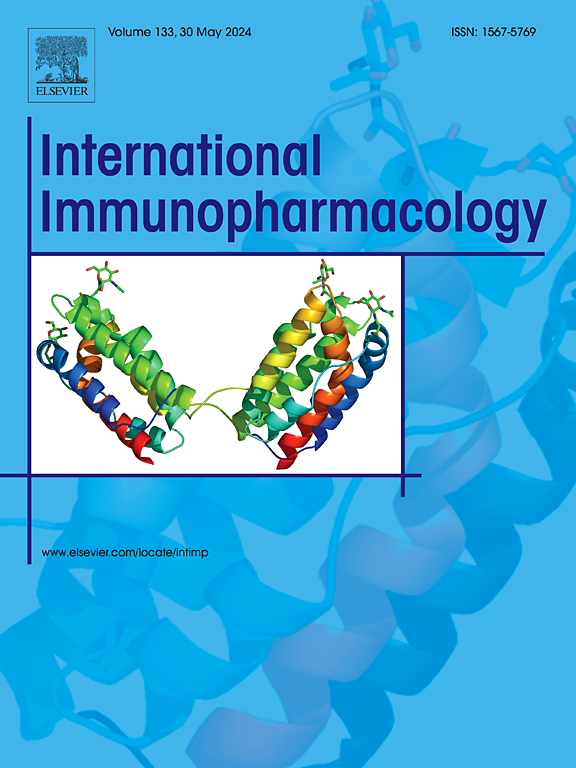Inhibition of ferroptosis alleviates atherosclerosis and foam cell formation by regulating lipid metabolism via AMPK activation
IF 4.8
2区 医学
Q2 IMMUNOLOGY
引用次数: 0
Abstract
Atherosclerosis (AS) is a lipid disorder characterised by lipid accumulation in the aortic wall and foam cell formation. Recent studies have shown that excess iron accelerates AS progression and foam cell formation by inducing ferroptosis. GPx4, an anti-erroptotic protein, promotes SCARB1 expression, which inhibits macrophage foam cell formation by interacting with HDL. Thus, a complex association exists between ferroptosis and lipid metabolism. However, the underlying mechanisms remain unclear. AMPK signalling is a key regulator of metabolism and is involved in the regulation of ferroptosis. In this study, we used the ferroptosis inhibitor ferrostatin-1 (Fer-1) to assay the effect of ferroptosis inhibition on AS and foam cell formation and to investigate the underlying mechanism. Our results showed that Fer-1 alleviated AS lesions and foam cell formation both in vivo and in vitro. Additionally, Fer-1 reduced iron content and lipid accumulation in oxidized low-density lipoprotein (ox-LDL)-treated macrophages by upregulating the levels of FTH, GPx4, and SCARB1 via AMPK activation. The inhibition of AMPK reduces the effect of Fer-1 on iron and lipid accumulation in macrophages, which may contribute to a deeper understanding of the pathological process of AS and provide a therapeutic target for AS.
求助全文
约1分钟内获得全文
求助全文
来源期刊
CiteScore
8.40
自引率
3.60%
发文量
935
审稿时长
53 days
期刊介绍:
International Immunopharmacology is the primary vehicle for the publication of original research papers pertinent to the overlapping areas of immunology, pharmacology, cytokine biology, immunotherapy, immunopathology and immunotoxicology. Review articles that encompass these subjects are also welcome.
The subject material appropriate for submission includes:
• Clinical studies employing immunotherapy of any type including the use of: bacterial and chemical agents; thymic hormones, interferon, lymphokines, etc., in transplantation and diseases such as cancer, immunodeficiency, chronic infection and allergic, inflammatory or autoimmune disorders.
• Studies on the mechanisms of action of these agents for specific parameters of immune competence as well as the overall clinical state.
• Pre-clinical animal studies and in vitro studies on mechanisms of action with immunopotentiators, immunomodulators, immunoadjuvants and other pharmacological agents active on cells participating in immune or allergic responses.
• Pharmacological compounds, microbial products and toxicological agents that affect the lymphoid system, and their mechanisms of action.
• Agents that activate genes or modify transcription and translation within the immune response.
• Substances activated, generated, or released through immunologic or related pathways that are pharmacologically active.
• Production, function and regulation of cytokines and their receptors.
• Classical pharmacological studies on the effects of chemokines and bioactive factors released during immunological reactions.

 求助内容:
求助内容: 应助结果提醒方式:
应助结果提醒方式:


